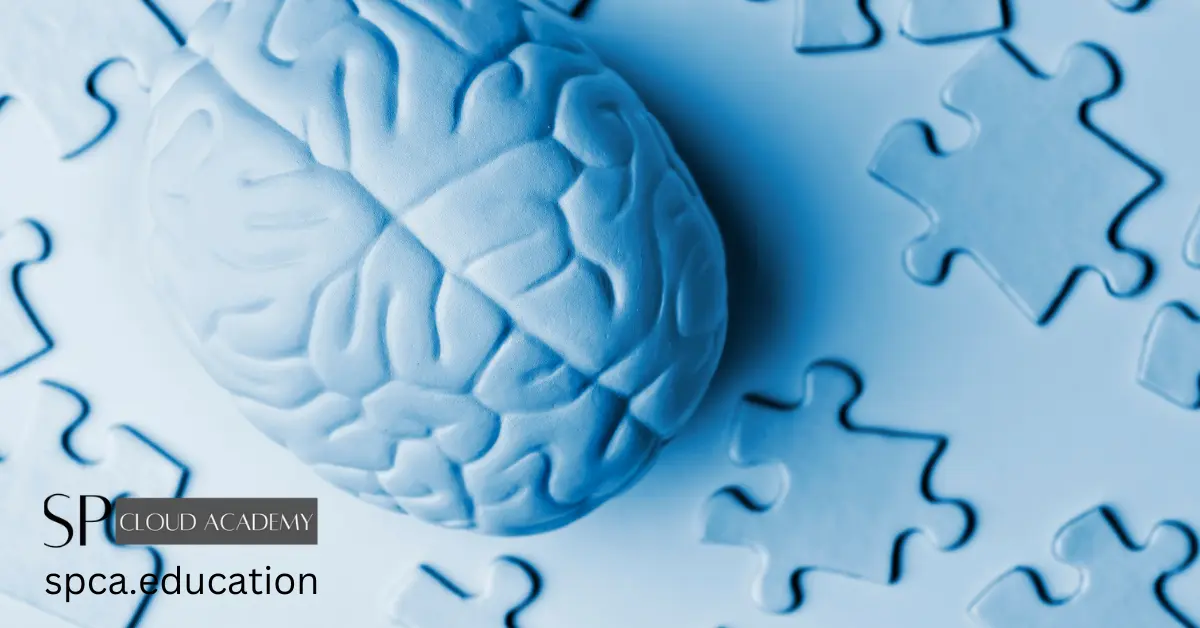Critical thinking is a cognitive process that involves actively and objectively analyzing information, concepts, situations, or problems to make well-informed, reasoned, and rational decisions or conclusions. It is an essential skill that helps individuals evaluate information, solve problems, make decisions, and engage with the world in a more thoughtful and effective manner.
Key characteristics and components of critical thinking include:
- Analysis: Critical thinkers are skilled at breaking down complex issues into smaller components to understand the underlying factors and relationships. They question assumptions and seek evidence.
- Evaluation: Critical thinkers assess the credibility and reliability of sources, arguments, or evidence. They differentiate between fact and opinion and consider the quality of information.
- Problem-Solving: Critical thinking involves identifying and defining problems, generating potential solutions, and selecting the best course of action. It also encompasses adaptability in response to changing circumstances.
- Decision-Making: After considering various options and evaluating them, critical thinkers make informed and logical decisions. They weigh the pros and cons and consider the potential consequences.
- Open-mindedness: Critical thinkers are willing to consider different viewpoints and perspectives. They are receptive to new information and open to revising their beliefs and opinions in light of new evidence.
- Inquisitiveness: A critical thinker is naturally curious and seeks to ask questions, gather information, and learn continuously. They avoid complacency and actively engage in the pursuit of knowledge.
- Effective Communication: Critical thinking involves the ability to articulate one’s thoughts and conclusions clearly and persuasively. This skill is vital for discussing and sharing ideas with others.
- Avoidance of Cognitive Biases: Critical thinkers are aware of common cognitive biases (e.g., confirmation bias, availability heuristic) and strive to minimize their influence on their thinking and decision-making.
Teaching critical thinking skills is important in various contexts, including education, the workplace, and everyday life. It is often incorporated into educational curricula to equip students with the ability to think critically, solve problems, and make informed choices. Critical thinking also plays a crucial role in fields such as science, law, medicine, and business, where rigorous analysis and decision-making are fundamental.
To foster critical thinking, educators and individuals can employ various strategies, such as active learning methods, Socratic questioning, and problem-based learning. Encouraging discussions, debates, and exercises that challenge assumptions can also help develop critical thinking skills.
In a rapidly changing and information-rich world, critical thinking is invaluable for making sense of complex issues, navigating a diverse range of opinions and perspectives, and making well-considered decisions. It empowers individuals to be more discerning, analytical, and adaptable in their approach to problems and challenges.
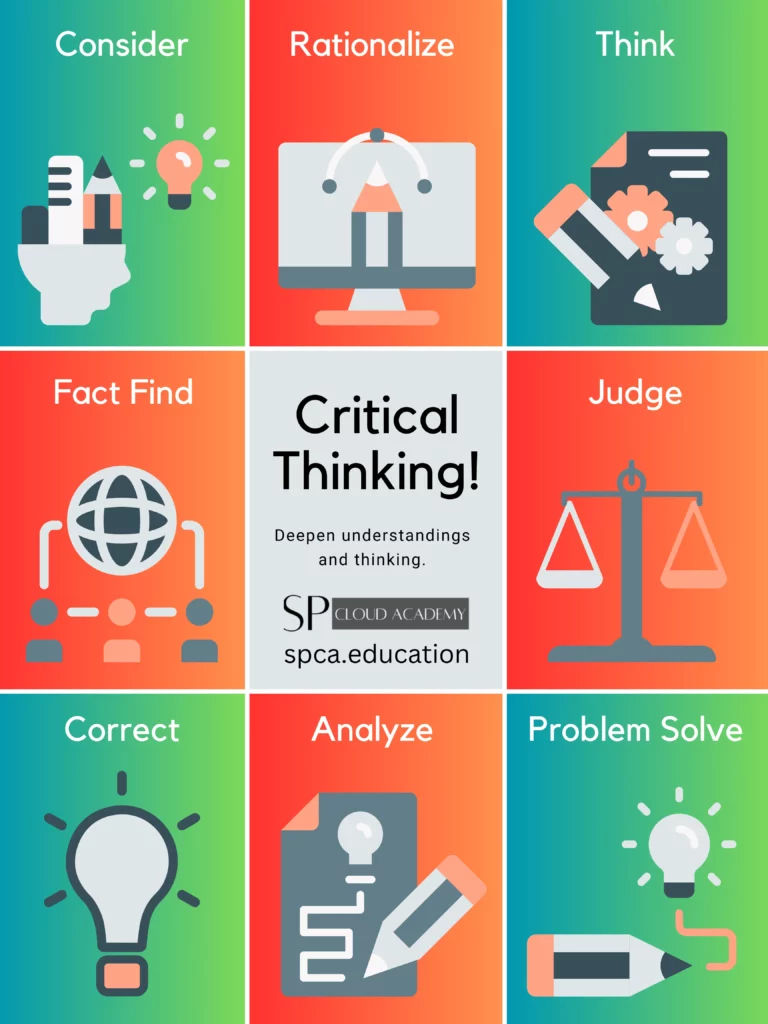
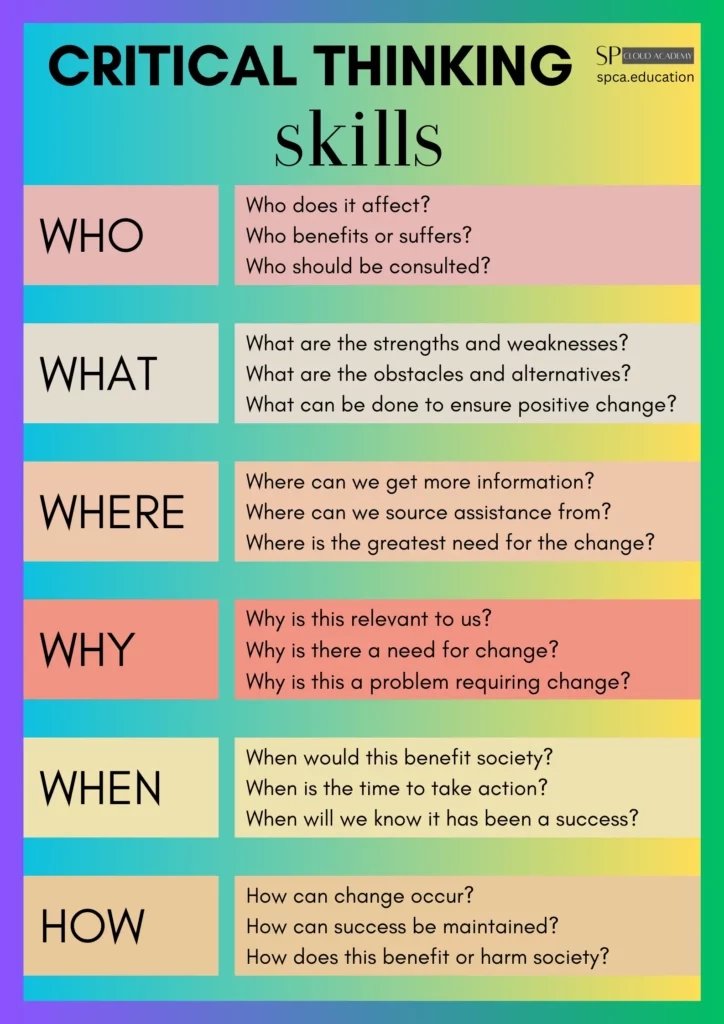
The Fundamentals of Critical Thinking
The fundamentals of critical thinking are the foundational principles and skills that underpin the practice of thinking critically. These fundamentals are essential for individuals to approach problems, information, and decision-making in a rational, systematic, and reasoned manner. Here are the key components of the fundamentals of critical thinking:
- Questioning and Curiosity: Critical thinking begins with a natural sense of curiosity and the ability to ask questions. It involves a willingness to explore, seek information, and probe deeper into subjects. This questioning attitude helps uncover assumptions, biases, and gaps in understanding.
- Analysis: Analytical thinking is the ability to break down complex issues or problems into their constituent parts. Critical thinkers dissect information, concepts, or situations to understand the underlying components and their relationships. This analysis helps in identifying key factors and dependencies.
- Evidence-Based Reasoning: Critical thinking emphasizes the importance of relying on evidence, facts, and data to support conclusions and arguments. Critical thinkers evaluate the credibility and reliability of sources and use evidence as the foundation for their judgments and decisions.
- Inference: Inference involves drawing logical and reasonable conclusions based on the available information and evidence. Critical thinkers consider the implications of the information they have and make inferences that are supported by the data.
- Problem-Solving: Critical thinking is closely linked to problem-solving. It involves the ability to identify, define, and frame problems and then explore potential solutions or strategies. Critical thinkers select the most appropriate solution after weighing the pros and cons.
- Decision-Making: Decision-making in the context of critical thinking involves making choices or judgments after careful consideration of relevant information, alternatives, and potential consequences. Critical thinkers make decisions that are well-reasoned and aligned with their goals.
- Evaluation: Evaluation is the process of assessing the quality, validity, and relevance of information, arguments, or solutions. Critical thinkers are skilled at critically appraising the strengths and weaknesses of different viewpoints or approaches.
- Logical and Clear Communication: Effective communication is a crucial aspect of critical thinking. Critical thinkers can express their ideas, arguments, and conclusions clearly and persuasively. They use logic and sound reasoning to make their case.
- Open-Mindedness: Critical thinkers are open to new ideas, different perspectives, and constructive feedback. They are willing to consider alternative viewpoints and are not rigid in their thinking.
- Avoidance of Cognitive Biases: Critical thinkers are aware of common cognitive biases, such as confirmation bias, availability heuristic, and anchoring, which can skew thinking and decision-making. They make an effort to recognize and mitigate these biases.
- Reflective Thinking: Critical thinking involves self-reflection and metacognition. Individuals periodically review and assess their own thought processes, seeking to improve their thinking skills and avoid mistakes.
- Problem Identification: Identifying problems or challenges is a critical thinking skill. Recognizing the need for critical analysis and decision-making often begins with identifying the issues that require attention.
These fundamentals of critical thinking are not isolated skills but are interconnected and work together to enhance an individual’s ability to think critically. Developing these skills can lead to more effective problem-solving, better decision-making, and the ability to navigate a complex and information-rich world with greater confidence and clarity.
The Role of Critical Thinking in Education
The role of critical thinking in education is pivotal and multifaceted. It not only enriches students’ cognitive abilities but also equips them with essential life skills that are valuable in various aspects of their personal and professional development. Here’s an exploration of the significant role of critical thinking in education:
- Empowering Independent Learning: Critical thinking encourages students to be independent learners. It enables them to evaluate and assimilate information from various sources, fostering a sense of self-reliance in their educational journey.
- Enhancing Problem-Solving Skills: Education is not just about acquiring knowledge but also about applying it. Critical thinking equips students with the ability to identify problems, analyze them, and develop effective solutions, making them more capable and confident problem solvers.
- Promoting Effective Decision-Making: Education should prepare students to make informed decisions. Critical thinking helps them evaluate options, weigh the pros and cons, and make well-reasoned decisions in academic, personal, and professional settings.
- Encouraging Creativity and Innovation: Critical thinking is not just about analyzing existing information but also about generating new ideas and approaches. It fosters creativity and innovation by challenging students to think outside the box.
- Developing Analytical Skills: Analytical thinking is a key component of critical thinking. It helps students dissect complex problems, concepts, or arguments into their constituent parts, leading to a deeper understanding.
- Fostering Effective Communication: Critical thinkers can express their ideas clearly and persuasively, both in writing and orally. This skill is valuable in academic presentations, debates, and everyday communication.
- Enhancing Information Literacy: In an age of information overload, critical thinking equips students with the ability to discern credible sources from unreliable ones. It encourages them to question the validity and bias of information.
- Cultivating a Lifelong Learning Mindset: Critical thinkers recognize that learning doesn’t end with graduation. They embrace the concept of lifelong learning, constantly seeking to expand their knowledge and adapt to changing circumstances.
- Preparing for the Real World: Critical thinking skills are highly sought after by employers and are crucial for career success. They enable graduates to navigate complex, dynamic, and competitive workplaces effectively.
- Building Resilience: The ability to overcome challenges, adapt to new situations, and cope with uncertainty is enhanced through critical thinking. It equips students with the resilience to face academic and life challenges.
- Encouraging Civic Engagement: Critical thinking helps students become responsible and informed citizens. It allows them to critically assess political issues, public policies, and societal problems, enabling them to participate in democracy more effectively.
- Deepening Ethical and Moral Reasoning: Critical thinking supports students in examining and reflecting on ethical and moral dilemmas. They can make principled and conscientious decisions, considering the consequences of their actions.
- Fostering Inclusivity: Critical thinking promotes an open-minded and empathetic approach to diverse perspectives and experiences, contributing to a more inclusive and tolerant society.
Incorporating critical thinking into the education system involves designing curriculum and instructional strategies that encourage active engagement, problem-based learning, and opportunities for students to question, analyze, and evaluate. Teachers play a pivotal role in modeling critical thinking and providing guidance in its development.
Ultimately, the role of critical thinking in education goes beyond academics; it nurtures individuals who are better equipped to face the challenges of an ever-changing world and contribute positively to society.
Teaching Strategies for Critical Thinking
Teaching critical thinking is a crucial aspect of education, and there are various strategies that educators can use to foster this essential skill in students. Here are some effective teaching strategies for critical thinking:
- Active Learning: Engage students in active learning experiences that require them to apply critical thinking skills. This can include problem-solving exercises, group discussions, case studies, and hands-on activities that challenge students to think and analyze.
- Socratic Questioning: Encourage the use of Socratic questioning, a method that involves asking open-ended questions to stimulate critical thinking. This method helps students explore ideas, examine assumptions, and evaluate evidence.
- Debates and Discussions: Organize debates and discussions on various topics to promote critical thinking and the exchange of diverse viewpoints. Encourage students to construct well-reasoned arguments and consider counterarguments.
- Collaborative Learning: Group work and collaborative learning activities can help students learn to think critically by engaging in dialogue and debate. Collaborative projects also teach teamwork and the importance of considering different perspectives.
- Real-World Problem Solving: Present students with real-world problems or case studies relevant to the subject matter. Encourage them to analyze these problems, identify potential solutions, and discuss the implications of each option.
- Critical Reading and Analysis: Emphasize critical reading skills by having students analyze and evaluate texts, articles, research papers, or literature. Teach them to question the author’s arguments, identify evidence, and assess the credibility of sources.
- Metacognition: Promote metacognitive awareness by encouraging students to reflect on their thinking processes. Ask them to consider how they approach problems, make decisions, and evaluate their own thinking for improvement.
- Mind Mapping and Concept Mapping: These visual tools can help students organize and connect ideas, making it easier to analyze complex concepts and relationships.
- Cognitive Tools: Use technology and cognitive tools like digital platforms and software designed for critical thinking exercises and simulations. These tools can provide interactive learning experiences.
- Role-Playing: Employ role-playing exercises that require students to take on different perspectives and make decisions or solve problems in a hypothetical scenario. This can enhance empathy and decision-making skills.
- Ethical Dilemmas: Present students with ethical dilemmas and encourage them to analyze the moral implications of various choices. Discuss the ethical dimensions of their decisions.
- Self-Assessment and Peer Review: Have students evaluate their own work and the work of their peers. This encourages them to critically assess the quality of arguments and the use of evidence.
- Multidisciplinary Approaches: Encourage students to approach problems from multiple angles by integrating knowledge from various disciplines. This promotes holistic thinking and interdisciplinary problem-solving.
- Critical Writing: Assign essays, research papers, or reports that require students to articulate their arguments, support their claims with evidence, and think critically while composing their written work.
- Feedback and Reflection: Provide constructive feedback on students’ critical thinking skills and encourage them to reflect on their thought processes. Feedback helps students refine their thinking.
- Experiential Learning: Engage students in real-world experiences, internships, or projects that require critical thinking to solve practical problems or make decisions.
- Cognitive Skill Development: Dedicate time to explicitly teach and practice specific critical thinking skills, such as argument analysis, decision-making, and problem-solving techniques.
It’s important to remember that teaching critical thinking is an ongoing process that develops over time. These strategies should be integrated into the curriculum and reinforced consistently to help students become more proficient critical thinkers. Moreover, fostering a classroom environment that encourages curiosity, open-mindedness, and the free exchange of ideas is essential to the success of these strategies.
Developing Critical Thinking in Everyday Life
Developing critical thinking skills in everyday life is valuable for making better decisions, solving problems, and understanding the world more deeply. Here are some practical ways to foster critical thinking in your daily life:
- Ask Questions: Cultivate a habit of asking questions about the information you encounter. Ask who, what, when, where, why, and how to probe deeper into topics and uncover assumptions.
- Challenge Assumptions: Be aware of your own assumptions and question them. Recognize that assumptions can sometimes lead to bias and error in thinking.
- Evaluate Information Sources: When consuming news, articles, or online content, assess the credibility of the sources. Be skeptical of information that lacks reliable sources or verification.
- Analyze Arguments: Practice dissecting arguments made by others. Identify the main points, supporting evidence, and any logical fallacies or flaws in the argument.
- Consider Alternative Perspectives: Make an effort to understand viewpoints that differ from your own. Explore the reasons behind these perspectives and consider their validity.
- Seek Evidence: When forming an opinion or making a decision, look for evidence to support your position. Avoid relying solely on emotions or personal beliefs.
- Avoid Confirmation Bias: Be conscious of the tendency to seek out information that confirms your preexisting beliefs. Make an effort to explore opposing viewpoints and evidence.
- Reflect on Your Thinking: Regularly reflect on your thought processes and decisions. Analyze your past decisions and consider how you might have approached them differently.
- Embrace Challenges: Don’t shy away from challenges or difficult problems. Embracing these opportunities can help you develop problem-solving and critical thinking skills.
- Keep a Journal: Maintain a journal or notebook where you document your thoughts, questions, and reflections on various topics. This can help you track your progress in critical thinking.
- Debate and Discussion: Engage in discussions and debates with others, whether it’s about current events, books, movies, or personal experiences. Share and defend your viewpoints.
- Read Actively: When reading, underline or take notes on key points, arguments, and areas where you have questions or disagreements. Engage with the material actively.
- Play Brain Games: Challenge yourself with puzzles, riddles, and brain-teasers. Games and puzzles can stimulate your problem-solving and critical thinking abilities.
- Make Informed Decisions: Before making decisions, gather information, consider potential outcomes, and evaluate the consequences. Avoid impulsive choices.
- Engage in Creative Thinking: Encourage creative thinking by brainstorming ideas, imagining alternative scenarios, and exploring innovative solutions to problems.
- Learn from Mistakes: Embrace your mistakes as opportunities for learning. Analyze what went wrong, what you can do differently next time, and how your thinking may have contributed to the mistake.
- Set Aside Emotional Reactions: When faced with emotionally charged situations, take a step back to analyze the situation objectively before responding.
- Apply Critical Thinking to Personal Goals: Utilize critical thinking in setting and achieving personal and professional goals. Break down complex goals into manageable steps.
- Continuous Learning: Make a commitment to lifelong learning. Explore new subjects, read widely, and attend workshops or courses to broaden your knowledge and thinking skills.
Developing critical thinking in everyday life is an ongoing process that requires practice and self-awareness. By incorporating these strategies into your daily routine, you can enhance your problem-solving abilities, make more informed decisions, and navigate the complexities of life with greater clarity and confidence.
Common Challenges in Teaching Critical Thinking
Teaching critical thinking is a valuable but often challenging endeavor. Educators may encounter various obstacles and hurdles when trying to instill critical thinking skills in their students. Here are some common challenges in teaching critical thinking:
- Lack of Time: The curriculum is often packed with content, leaving limited time for in-depth critical thinking exercises and discussions.
- Large Class Sizes: In larger classes, it can be challenging to provide individualized attention and engage every student in critical thinking activities.
- Resistance to Change: Both students and educators may resist changes in teaching methods, especially if they are used to more traditional, lecture-based approaches.
- Assessment Difficulties: Assessing critical thinking is not as straightforward as assessing memorization or basic skills. Creating effective assessment tools can be challenging.
- Teacher Training: Not all educators are trained in techniques for teaching critical thinking. They may not have the necessary skills or experience to effectively promote critical thinking.
- Student Readiness: Some students may not be adequately prepared for critical thinking activities due to variations in their prior educational experiences.
- Overemphasis on Standardized Testing: Educational systems that prioritize standardized testing may inadvertently discourage critical thinking by emphasizing rote memorization and regurgitation of facts.
- Cultural Differences: Cultural factors can influence the way students approach critical thinking. Some cultures may emphasize deference to authority over questioning.
- Cognitive Development: Critical thinking skills may not fully develop until later stages of cognitive development, which can pose challenges for teaching younger students.
- Disciplinary Differences: Different subjects may require varying approaches to critical thinking, making it difficult to have a one-size-fits-all teaching strategy.
- Limited Resources: Insufficient access to materials, technology, and resources for critical thinking exercises can hinder educators’ efforts.
- Student Motivation: If students do not see the immediate relevance or benefits of critical thinking skills, they may lack motivation to engage fully.
- Managing Classroom Dynamics: Encouraging open and respectful dialogue can be difficult, as some students may dominate discussions while others remain quiet.
- Complexity of Critical Thinking: Critical thinking is a multifaceted skill that encompasses various components (e.g., analysis, evaluation, inference). Teaching these components effectively can be challenging.
- Cognitive Biases: Students, like everyone else, can be prone to cognitive biases that can hinder their ability to think critically. These biases need to be addressed and minimized.
- Balance with Content: Educators may struggle to strike the right balance between covering the necessary content and dedicating time to critical thinking activities.
- Misconceptions: Students may have misconceptions about critical thinking, often confusing it with skepticism or mere criticism. Educators need to clarify the concept.
Overcoming these challenges in teaching critical thinking often involves a combination of strategies, such as providing training and professional development for educators, integrating critical thinking into the curriculum, and fostering a supportive classroom environment where students feel safe to ask questions and express their thoughts. It’s an ongoing process that requires dedication and adaptability.
Assessing Critical Thinking Skills
Assessing critical thinking skills is essential to determine the effectiveness of educational efforts and to help individuals improve their ability to think critically. Here are various methods and approaches to assess critical thinking skills:
- Standardized Tests: There are standardized assessments specifically designed to measure critical thinking skills. Examples include the Watson-Glaser Critical Thinking Appraisal and the California Critical Thinking Skills Test (CCTST).
- Essay Exams: Design essay questions that require students to analyze, evaluate, and synthesize information. Evaluate their essays based on the quality of their arguments and use of evidence.
- Multiple-Choice Questions: Develop multiple-choice questions that assess higher-order thinking skills, such as analysis, evaluation, and problem-solving. Avoid questions with straightforward answers.
- Rubrics: Create rubrics to evaluate critical thinking in student assignments, essays, or projects. Define criteria for assessing components like argumentation, evidence, and logical reasoning.
- Problem-Solving Scenarios: Present students with real-world or hypothetical problems and assess their ability to identify issues, generate solutions, and evaluate the consequences of various options.
- Case Studies: Use case studies that require students to analyze complex situations, make decisions, and provide evidence for their choices. Evaluate their responses based on reasoning and problem-solving.
- Peer Review: Incorporate peer review processes in which students assess each other’s work using established criteria for critical thinking.
- Reflective Journals: Encourage students to maintain reflective journals in which they document their thought processes, questions, and critical thinking challenges they encounter. Review and provide feedback on these journals.
- Classroom Discussion: Observe and assess students’ contributions to classroom discussions and debates. Evaluate their ability to express ideas clearly, engage in constructive dialogue, and consider alternative viewpoints.
- Portfolio Assessment: Have students compile portfolios of their work, including essays, projects, and assignments that demonstrate their critical thinking skills. Assess the overall quality and development of these skills over time.
- Anecdotal Records: Keep anecdotal records of students’ critical thinking abilities. Note instances where they demonstrated strong critical thinking skills or areas where improvement is needed.
- Observation: Directly observe students as they engage in critical thinking activities, group work, or problem-solving tasks. Assess their ability to analyze, synthesize, and evaluate information in real-time.
- Structured Interviews: Conduct structured interviews or one-on-one discussions with students to gauge their thought processes, problem-solving strategies, and their ability to think critically.
- Online Assessment Tools: Use online platforms and assessment tools that provide interactive exercises and simulations to assess critical thinking skills.
- Capstone Projects: Implement capstone projects that require students to integrate their knowledge and apply critical thinking to a comprehensive, real-world project.
When assessing critical thinking skills, it’s important to consider not only the final outcome but also the process of critical thinking. Focus on how students arrive at their conclusions, the depth of their analysis, and the quality of their reasoning. Furthermore, providing constructive feedback and opportunities for students to develop their critical thinking skills is essential for improvement.
Cultivating a Critical Thinking Culture
Cultivating a critical thinking culture within an organization or educational institution is a multifaceted process that involves fostering an environment where critical thinking is valued, practiced, and integrated into daily routines. Here are steps and strategies to help create a critical thinking culture:
Leadership and Commitment:
- Leadership Buy-In: Begin with the support and commitment of leaders, whether in an educational institution, a company, or any other organization. Leaders should exemplify and actively promote critical thinking.
Clarify the Vision:
- Establish Clear Expectations: Define what critical thinking means within your organization and set clear expectations for how it should be applied in various contexts.
Training and Development:
- Provide Training: Offer training and development programs to help employees or students acquire and refine critical thinking skills. These programs can include workshops, seminars, and online courses.
Incorporate Critical Thinking into Curriculum or Work:
- Curriculum Integration: In educational institutions, integrate critical thinking throughout the curriculum and various subject areas.
- Workplace Integration: In businesses, integrate critical thinking into daily operations, decision-making processes, and problem-solving initiatives.
Supportive Learning and Work Environments:
- Encourage Open Dialogue: Foster an environment where open dialogue and the free exchange of ideas are encouraged and valued.
- Promote Inclusivity: Create an inclusive culture that respects diverse perspectives and experiences, which can contribute to richer critical thinking.
Feedback and Assessment:
- Provide Constructive Feedback: Offer constructive feedback to individuals to help them improve their critical thinking skills. Constructive criticism can be a powerful learning tool.
- Assessment Tools: Implement assessment tools to gauge the effectiveness of critical thinking initiatives. Use surveys or other methods to measure the impact.
Mentorship and Peer Learning:
- Mentorship Programs: Establish mentorship programs where experienced critical thinkers guide and support newcomers.
- Peer Learning: Encourage peer-to-peer learning and collaborative problem-solving to reinforce critical thinking skills.
Continuous Improvement:
- Embrace a Growth Mindset: Promote the idea that critical thinking skills can be developed and improved over time. Encourage individuals to adopt a growth mindset.
Engage in Real-Life Challenges:
- Apply Critical Thinking to Real Challenges: Regularly engage in problem-solving activities or case studies that require the application of critical thinking skills to real-life scenarios.
Celebrate Success:
- Recognition: Recognize and celebrate achievements related to critical thinking. This can motivate individuals to continue honing their skills.
Communication Skills:
- Effective Communication: Promote strong communication skills, as the ability to express critical thinking effectively is essential.
Critical Thinking Advocates:
- Appoint Advocates: Identify and appoint critical thinking advocates or champions within the organization to help drive initiatives and engage others.
Resource Allocation:
- Allocate Resources: Allocate resources, including time and funding, to support critical thinking programs, training, and activities.
Review and Adapt:
- Regular Review: Continuously assess the effectiveness of your critical thinking culture and make adjustments as needed based on feedback and outcomes.
Cultivating a critical thinking culture is an ongoing process that requires consistent effort, support from leadership, and a commitment to valuing and promoting critical thinking as a core component of your organization or educational institution. Over time, a culture of critical thinking can lead to improved problem-solving, more effective decision-making, and a deeper understanding of complex issues.
Resources for Teaching and Learning Critical Thinking
There are various resources available for teaching and learning critical thinking. These resources can be helpful for educators, students, and individuals interested in developing their critical thinking skills. Here’s a list of resources and platforms to explore:
1. Books:
- “Critical Thinking: Tools for Taking Charge of Your Learning and Your Life” by Richard Paul and Linda Elder
- “Thinking, Fast and Slow” by Daniel Kahneman
- “Superforecasting: The Art and Science of Prediction” by Philip E. Tetlock
- “Critical Thinking: A Student’s Introduction” by Gregory Bassham and William Irwin
- “How to Think: A Survival Guide for a World at Odds” by Alan Jacobs
2. Online Courses:
- Coursera: Offers courses like “Critical Thinking in Global Challenges” and “Logical and Critical Thinking” from top universities.
- edX: Provides courses such as “Critical Thinking & Problem Solving” and “Critical Thinking and Problem-Solving” from leading institutions.
- LinkedIn Learning: Features courses on critical thinking, problem-solving, and decision-making.
3. Educational Websites:
- The Critical Thinking Community (criticalthinking.org): Offers a wide range of resources, including articles, guides, and teaching materials.
- The Foundation for Critical Thinking (criticalthinking.org): Provides resources and articles on critical thinking concepts and strategies.
- Philosopher’s Toolkit (philosophers-toolkit.com): An online resource for learning critical thinking through philosophy.
4. Podcasts:
- “The Critical Thinking Initiative” by Critical Thinking Initiative: Discusses critical thinking topics and strategies.
- “The Argument Ninja” by Kevin deLaplante: Explores critical thinking, argumentation, and reasoning skills.
5. Mobile Apps:
- Elevate: Offers brain training exercises to improve skills like critical thinking, reading, and writing.
- Lumosity: Provides games and activities designed to enhance cognitive skills, including critical thinking.
6. YouTube Channels:
- Critical Thinker Academy: Features videos on critical thinking concepts, techniques, and practical applications.
- Wireless Philosophy (WiPhi): Offers animated videos explaining philosophical concepts that can improve critical thinking.
7. TED Talks:
- TED Talks often feature speakers who discuss various aspects of critical thinking, problem-solving, and decision-making.
8. Blogs and Articles:
- Online blogs and articles from reputable sources like Psychology Today, Scientific American, and Harvard Business Review can provide insights and tips on critical thinking.
9. Critical Thinking Games and Puzzles:
- Board games like “The Settlers of Catan” and puzzle games like Sudoku can help develop critical thinking skills.
10. Local Workshops and Seminars:
– Check for local workshops or seminars on critical thinking skills that may be offered by educational institutions or community organizations.
11. University Courses and Workshops:
– If you’re a student, consider enrolling in university courses or attending workshops dedicated to critical thinking and reasoning.
These resources cover a wide range of formats, from books and online courses to mobile apps and YouTube channels, catering to different learning preferences and needs. Whether you are an educator looking to enhance your teaching methods or an individual seeking to develop your critical thinking skills, these resources can be valuable in your journey toward improved critical thinking.
Conclusion
In conclusion, critical thinking is an invaluable skill that plays a pivotal role in education, work, problem-solving, decision-making, and everyday life. It involves the ability to analyze information, evaluate evidence, and make reasoned judgments, fostering adaptability, creativity, and the capacity to navigate an information-rich world.
The fundamentals of critical thinking encompass asking questions, challenging assumptions, seeking evidence, and promoting open-mindedness. Teaching and learning critical thinking require dedicated efforts, incorporating strategies like active learning, problem-solving scenarios, and real-world applications.
Cultivating a critical thinking culture is essential within organizations and educational institutions. Leadership commitment, training, supportive environments, and continuous improvement are key elements in nurturing a culture where critical thinking thrives.
Assessing critical thinking skills is crucial for measuring progress and promoting growth. Methods such as standardized tests, essay exams, peer review, and portfolio assessment can gauge the effectiveness of critical thinking programs.
Furthermore, a wide array of resources, including books, online courses, podcasts, and mobile apps, is available for those seeking to develop their critical thinking skills. These resources cater to diverse learning preferences and needs.
The case studies and success stories presented illustrate how critical thinking can lead to innovative solutions, uncover truths in complex situations, and drive success in various fields, from medicine and space exploration to entrepreneurship and creative endeavors.
Overall, critical thinking is an essential skill that empowers individuals to think more clearly, solve problems effectively, make informed decisions, and engage with the world with greater depth and understanding. It is a skill that should be nurtured, developed, and valued throughout one’s educational and professional journey.
Related Articles
Blended Learning: https://spca.education/category/blended-learning/
-
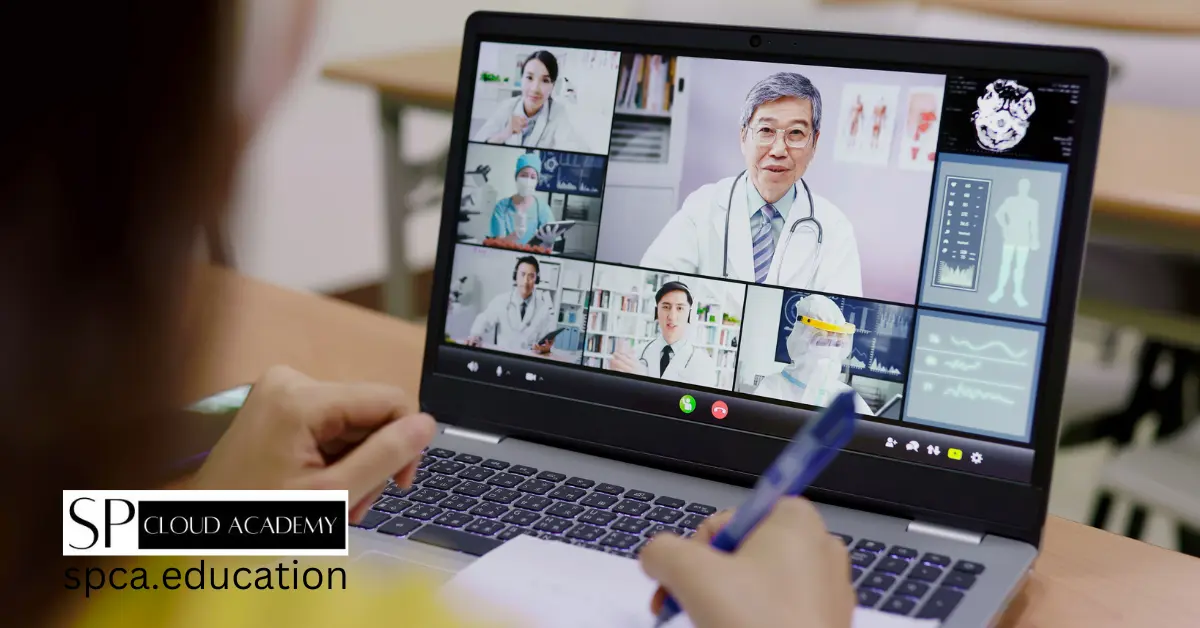
Digital Cooperative Learning: Best Online Collaboration Tools for Students
-

The Future of Education: AI Tutors and Immersive Learning
-

Google Books: Unlocking a World of Knowledge at Your Fingertips
-

Why Virtual Learning Environments Are the Key to Modern Education Success
-

Transforming Engineering Education: Why AI Literacy is a Must for Educators
-

The Education 4.0 Framework
-

The Ultimate Guide to Creating and Publishing an e-Library on WordPress: A Step-by-Step Approach
-
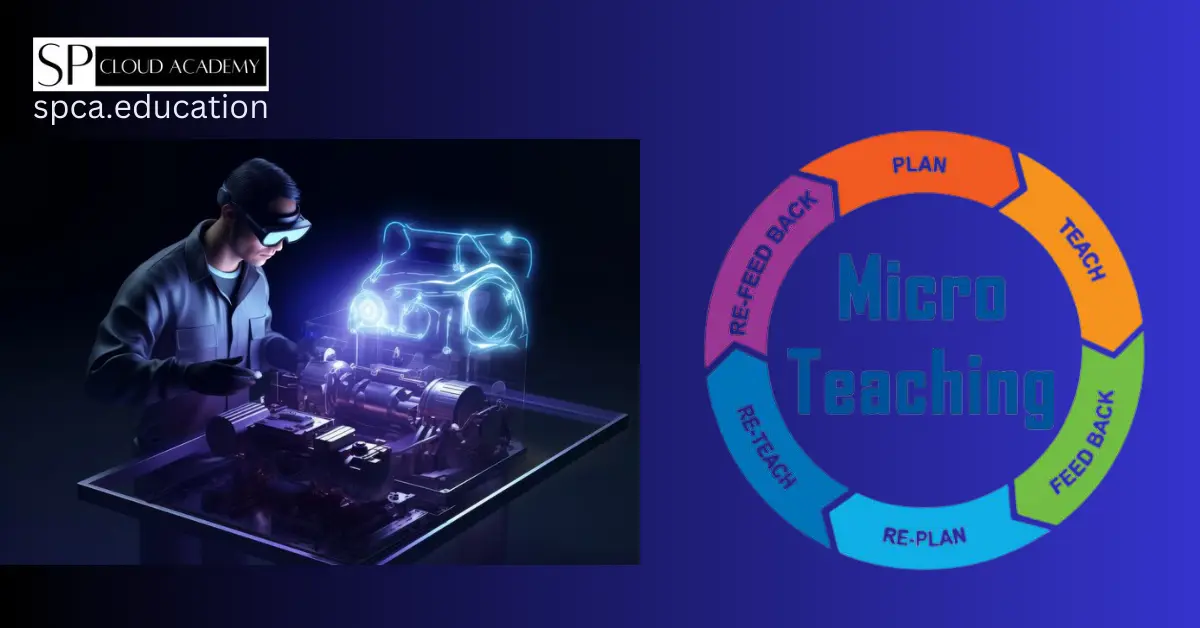
The Art of Microteaching: A Step-by-Step Guide to Success
-

Mastering the Art of Effective Communication: Presentation Techniques and Public Speaking Skills
